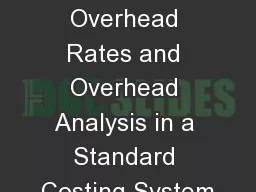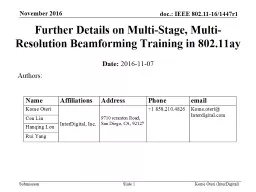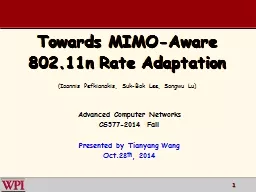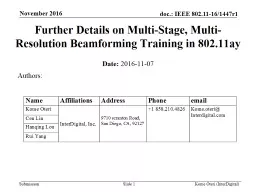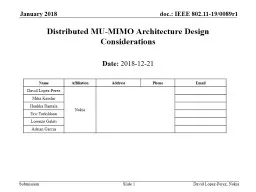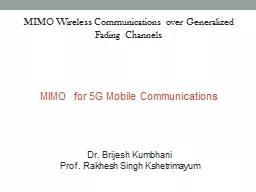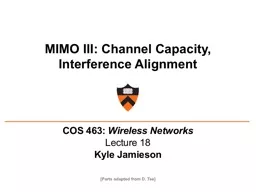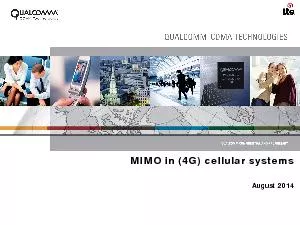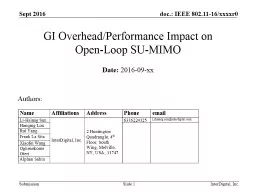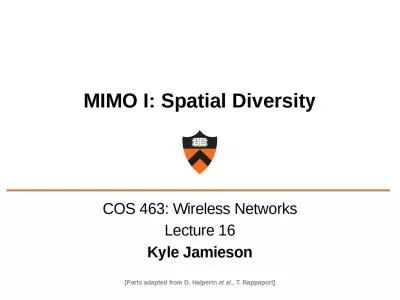PPT-Slide 1 Feedback Overhead Analysis for 16 Spatial Stream MIMO
Author : pattyhope | Published Date : 2020-08-05
Date 20190509 Authors Slide 2 Abstract In this contribution we provide an overhead analysis for soundingfeedback for 16 spatial streams using 80211ax protocols
Presentation Embed Code
Download Presentation
Download Presentation The PPT/PDF document "Slide 1 Feedback Overhead Analysis for ..." is the property of its rightful owner. Permission is granted to download and print the materials on this website for personal, non-commercial use only, and to display it on your personal computer provided you do not modify the materials and that you retain all copyright notices contained in the materials. By downloading content from our website, you accept the terms of this agreement.
Slide 1 Feedback Overhead Analysis for 16 Spatial Stream MIMO: Transcript
Download Rules Of Document
"Slide 1 Feedback Overhead Analysis for 16 Spatial Stream MIMO"The content belongs to its owner. You may download and print it for personal use, without modification, and keep all copyright notices. By downloading, you agree to these terms.
Related Documents



